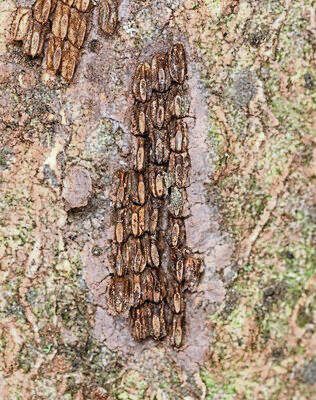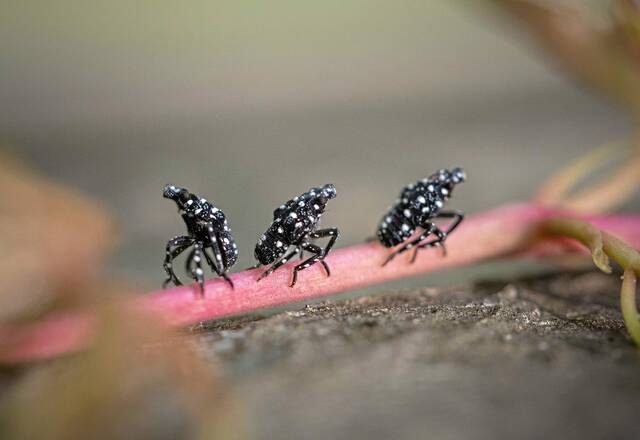Show no mercy to the spotted lanternfly
Stomp ’em, smash ’em, squash ’em.
But, by all means, kill them.
That’s what the state Department of Agriculture recommends when people encounter a spotted lanternfly.
“It’s not easy; they’re really fast,” said Sandy Feather, an educator at the Penn State Extension, laughing.
People also can report sightings by visiting the extension’s website or by calling 1-888-4BADFLY.
Pennsylvania Department of Agriculture spokeswoman Shannon Powers said the department follows up with all reports to confirm a sighting and to treat it.
“Every one of those reports — especially outside of the quarantine area — gets followed up,” Powers said.
Egg masses have a gray and brown, mud-like covering and can be found on tree bark or along smooth surfaces.
According to the Penn State Extension, newly laid eggs can be shiny and older egg masses may lose their covering and appear as four to seven columns of seed-like eggs.
Nymphs are black with white spots and are wingless. They develop red patches and white spots as they mature, according to the extension.
Adult spotted lanternflies are about an inch long by a half-inch wide with wings folded. When they’re at rest, they have grayish wings with black spots, with black and gray tips. When flying or startled, they display vibrant red hind wings.
Kellen Stepler is a TribLive reporter covering the Allegheny Valley and Burrell school districts and surrounding areas. He joined the Trib in April 2023. He can be reached at kstepler@triblive.com.
Remove the ads from your TribLIVE reading experience but still support the journalists who create the content with TribLIVE Ad-Free.




